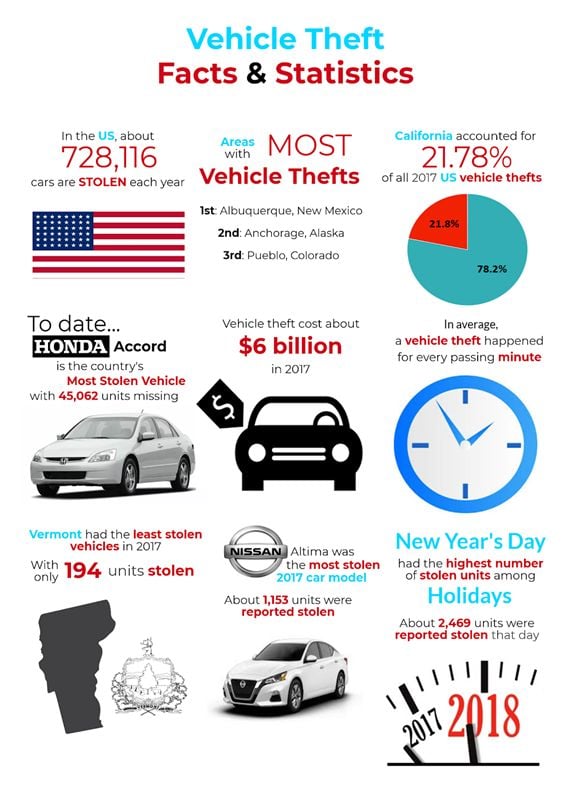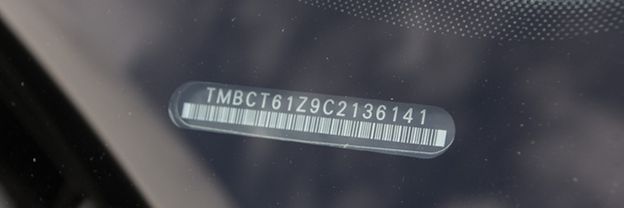What is Vehicle VIN Cloning?
Have you heard of identity theft? It involves using another person’s name and personal information to get credit or loans. The unique identity of a vehicle can be stolen, too. Vehicle VIN cloning involves stealing the vehicle identification number (VIN) and using it on another car. The aim is to conceal the true identity of a stolen car or one that has a bad past. VIN cloning makes buyers think they are buying a good vehicle.
A thriving industry of stolen cars and cloned VINs
Mike Cella of Massachusetts wanted to trade in his SUV. However, a car history report for the SUV showed four records of accidents. Thieves cloned his vehicle’s VIN to replace the original VIN of a stolen 2007 GMC Yukon Denali. None of the previous owners discovered the sham until the police seized the stolen vehicle from the latest owner, Misty. Luckily, she is in one of a few states that protect buyers from VIN cloning. Most victims of this scheme will have to pay the loan for a car they no longer possess.
How Common is VIN Cloning and How it is Done?
One of the largest auto theft cases in the US involved VIN cloning. In 2009, the illegal practice gained massive attention when FBI busted a $25 million VIN cloning ring. It operated for two decades, stealing more than 1000 vehicles in Florida and selling them with cloned VINs. This infamous case tells us how useful VIN cloning is for auto theft operations. Check out the infographic below which shows vehicle theft statistics in the US.
Vehicle VIN cloning has been proven to be effective in concealing a vehicle’s real identity. In the US, we have seen the following:
- the steady increase in incidents of VIN cloning since 2001
- over $36 million in total cost of fraudulent transactions
 Who are the victims of VIN cloning? First, the legal owner of the vehicle with the cloned VIN, the legal owner of the stolen vehicle, and the buyer or new owner. In some cases, legal owners may receive fines for driving violations they did not commit or pay outstanding loans. Indictments may include insurance companies and even dealers who have unwittingly sold such vehicles. The buyers may find no legal recourse once the police confiscate the stolen vehicle. Some states like Wisconsin require dealers to refund customers who purchase vehicles with cloned VIN unknowingly.
Who are the victims of VIN cloning? First, the legal owner of the vehicle with the cloned VIN, the legal owner of the stolen vehicle, and the buyer or new owner. In some cases, legal owners may receive fines for driving violations they did not commit or pay outstanding loans. Indictments may include insurance companies and even dealers who have unwittingly sold such vehicles. The buyers may find no legal recourse once the police confiscate the stolen vehicle. Some states like Wisconsin require dealers to refund customers who purchase vehicles with cloned VIN unknowingly.
What’s in a VIN? Why is it cloned?
The 17-character alphanumeric VIN sets a vehicle apart from any other vehicle. Each section of the VIN stands for valuable vehicle information: country of origin, manufacturer, brand,
engine size and type, automaker security code, model year, assembly plant, and serial number. VinCheck.info’s free VIN decoder page offers a closer look into how the VIN can be decoded.

This is how a VIN usually appears on a dashboard

Here are some of the most important uses of the VIN:
- Law enforcement agencies: to identify and recover stolen cars and car parts
- Automakers: to identify units covered by safety recalls
- Car buyers: to access the vehicle history of a used car
- Motor vehicle agencies: to identify registered vehicles and associate them with vehicle records
- Service shops: to identify the engine, transmission and brake systems to address issues properly
How to identify cloned vehicles?
Used car buyers can protect themselves from VIN cloning and other fraudulent acts. We have compiled a list of useful tips and developed tools for your protection:
#1 Run a background check on any car before buying.
The National Insurance Crime Bureau’s (NICB) free VIN check tool can help consumers confirm if a vehicle has been reported “stolen” or “salvaged.” The NICB is a nonprofit organization created to fight insurance-related crimes.
VinCheck.info is an online platform that offers free vehicle history reports. It offers a variety of tools available for a car background check:
- free VIN Check report – to access vehicle history by VIN or by license plate number
- free VIN decoder – to access the original vehicle data available upon release from the manufacturing plant
- free VIN check by state or free VIN check by make – to check state- or brand-specific records and vehicle-related information.
#2 Examine the registration, title records, and other associated documents.
Meet the seller in an appropriate place. The best place is at the address indicated on the registration document. If the seller is a dealer, it should be at their shops or business locations. This is one way of verifying that the seller is the owner, or has the right to sell on the owner’s behalf. Check the title records for any inconsistency with the VIN recorded. The text should appear neat and clean. Something is not right if the VIN appears out of context or has any erasures.
#3 Inspect the vehicle in person.
Meet the seller in an appropriate place. The best place is at the address indicated on the registration document. If the seller is a dealer, it should be at their shops or business locations. This is one way of verifying that the seller is the owner, or has the right to sell on the owner’s behalf.
You will find the VIN in any (not necessarily all) of the following spots:
- the driver’s side dashboard
- the driver’s side door jamb
- the engine block inside the hood
- the body frame’s front end
- the trunk’s interior
- the back wheel well
Some vehicle details are only observable to a trained eye. Let a trusted mechanic help you confirm what the vehicle history reports say about a car. Are there discrepancies between what a vehicle actually is versus what the reports tell? If yes, then something might be off. Stay vigilant for red flags like erasures on the vehicle’s VIN plates. Walk away from the deal if it feels suspicious.
Beware of ridiculously low price tags! These are common because fraudsters would rather get away with some money rather than nothing. If a deal seems too good to be true, the odds are that it might not be worth the cost.
What are the most frequently stolen cars?
Frequent targets of auto theft are more likely sold with cloned VINs. Next time you buy a car, watch out for these most stolen vehicles in the US (Source: National Insurance Crime Bureau):
| USED CARS: Hottest Auto Theft Targets in the US ranked by number of units stolen in 2017 |
||
| Model | No. of Units Stolen | Most Stolen Model Year |
| 1. Honda Civic | 45,062 | 1998 |
| 2. Honda Accord | 43,764 | 1997 |
| 3. Ford F-150 | 35,105 | 2006 |
| 4. Chevrolet Silverado | 30,056 | 2004 |
| 5. Toyota Camry | 17,276 | 2017 |
| 6. Nissan Altima | 13,358 | 2016 |
| 7. Toyota Corolla | 12,337 | 2016 |
| 8. Dodge/Ram Pickup | 12,004 | 2001 |
| 9. GMC Sierra | 10,865 | 2017 |
| 10. Chevrolet Impala | 9,487 | 2008 |
| NEW CARS: Hottest Auto Theft Targets in the US ranked by number of units stolen in 2017 |
|
| Model | No. of Units Stolen |
| 1. Nissan Altima | 1,153 |
| 2. Toyota Camry | 1,100 |
| 3. GMC Sierra | 957 |
| 4. Hyundai Elantra | 929 |
| 5. Ford Fusion | 874 |
| 6. Ford F-150 | 842 |
| 7. Ram Pickup | 835 |
| 8. Toyota Corolla | 832 |
| 9. GMC Savana | 774 |
| 10. Hyundai Sonata | 759 |